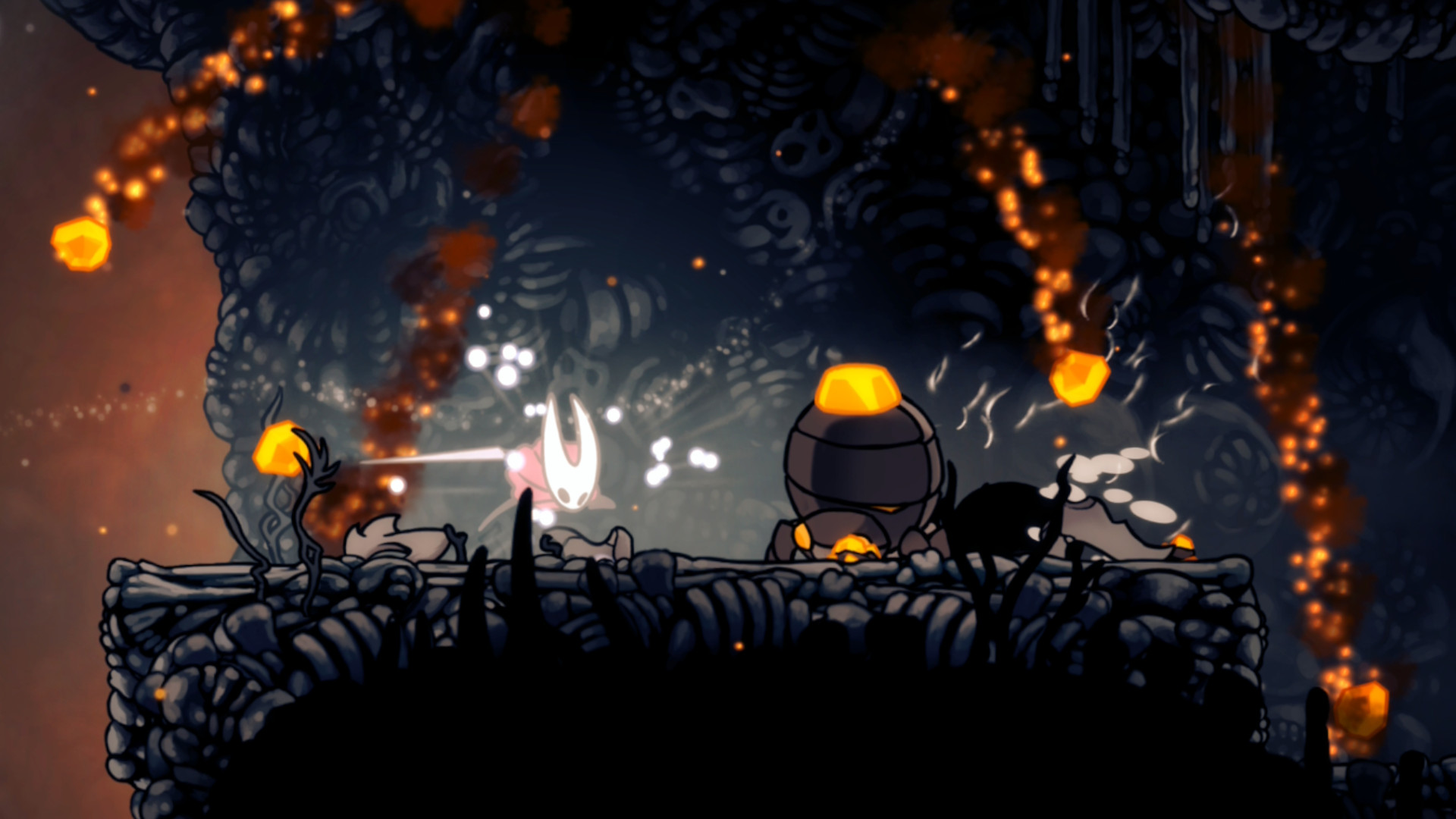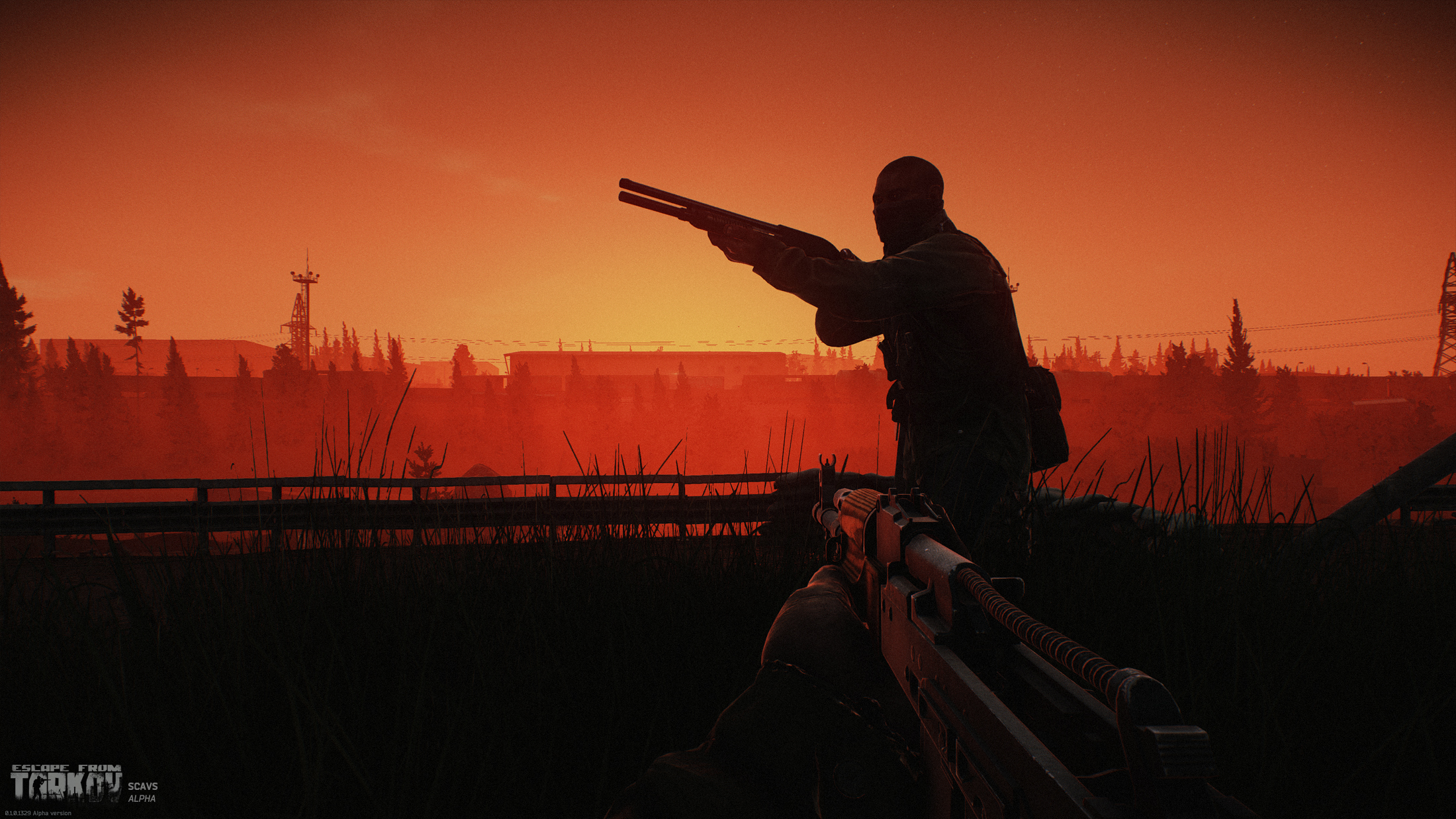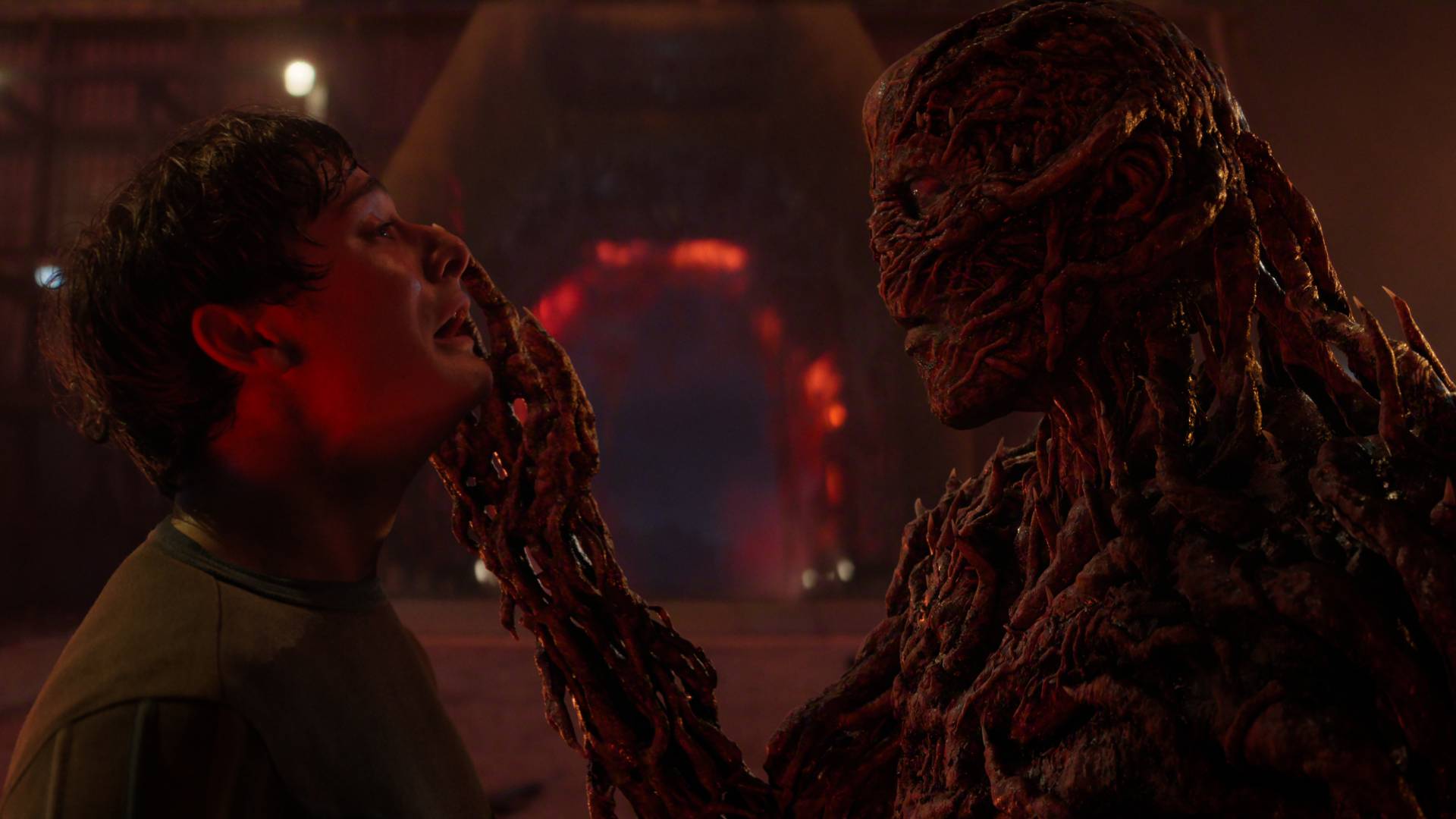GamesRadar+ Verdict
Hollow Knight: Silksong is a near perfect followup to its justifiably revered predecessor. Unfurling from its cocoon, this Metroidvania has evolved on just about everything I loved about the original. With a gorgeous, labyrinthine world full of secrets, and twitchy acrobatic controls, Silksong can be rewarding when it's not being overly punishing. It's a bit tougher out the gate than last time around – but Silksong has been worth the wait.
Pros
- +
Hornet's scope of abilities are fun to play with
- +
Absolutely gorgeous art design
- +
World is rewarding to explore
Cons
- -
Aggressive enemies sometimes feel like magnets
- -
Diagonal jump can be a little rough
- -
Hostile design elements can be irritating rather than challenging
Why you can trust GamesRadar+
Even before anybody hit the title screen for Hollow Knight: Silksong, this sequel was already a phenomenon. Following up its surprise indie mega hit, Team Cherry has had its work cut out to deliver on the near untold hype levels. Now, dramatically throwing off the cloak of secrecy, the big question is: does it live up to the original? After spending over 30 hours battling my way through Pharloom I'm happy to say it definitely does and then some – but with serious wrinkles in its robes that may infuriate. At times the difficulty of penetrating its coarse thread may delight, and at others feel unnecessarily knotty.
While the early joy of Hollow Knight was its impeccable atmosphere and bug-inhabited world fallen to ruin, later updates also dramatically upped the difficulty across its platforming and boss design. Simply put, Hollow Knight: Silksong doesn't just use the original's later challenge as a jumping off point, but divebombs it with aplomb, flipping into the air. Silksong is hard from early on.
Living up to the buzz
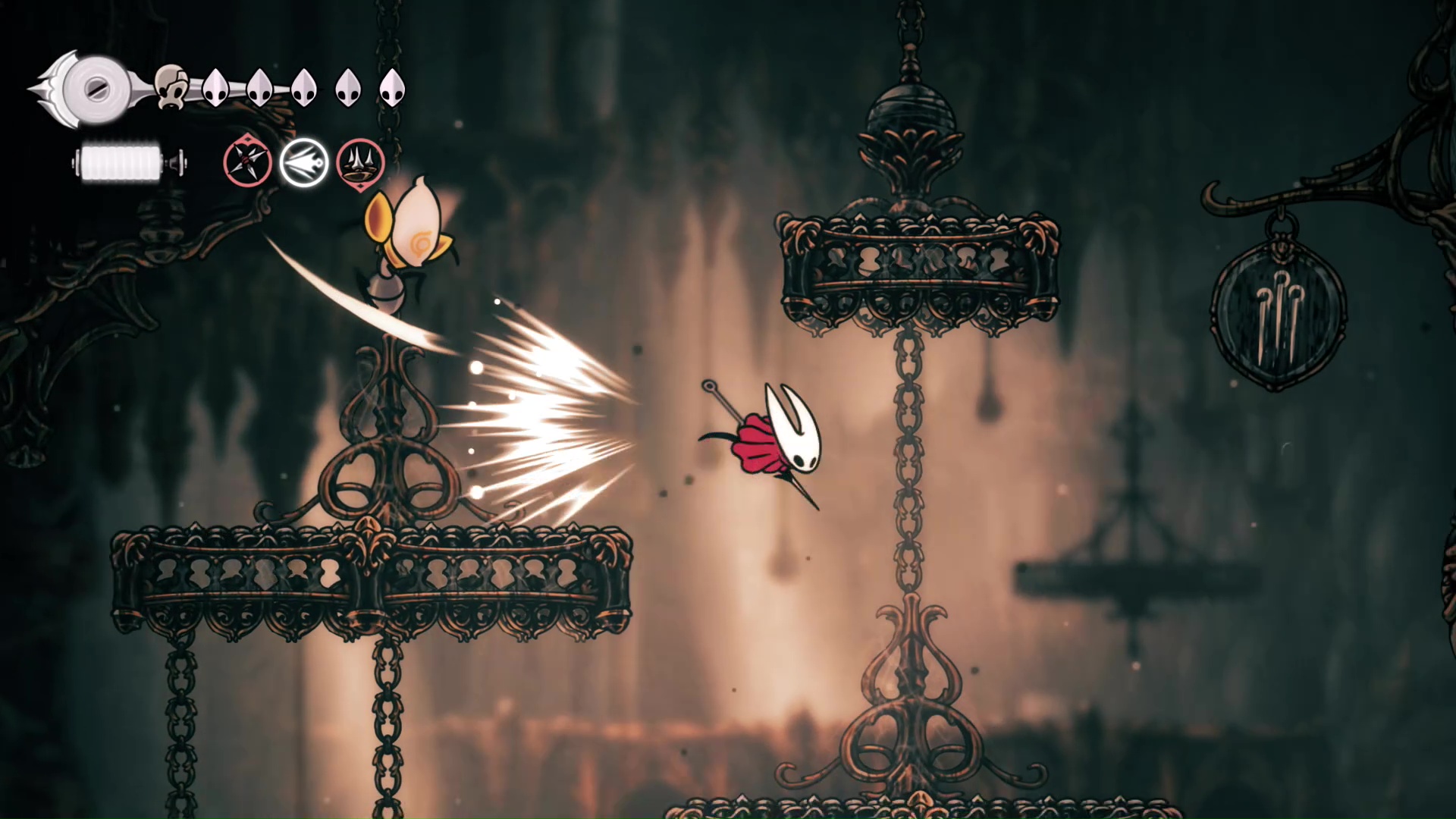
Release date: September 4, 2025
Platform(s): PC, PS5, PS4, Xbox Series X/S, Xbox One, Nintendo Switch 2, Nintendo Switch
Developer: In-house
Publisher: Team Cherry
Narratively, though, you don't need to have played the original Hollow Knight to get on board with Hollow Knight: Silksong (though there are some thematic parallels). Captured by mysterious veiled figures and transported to the insect kingdom of Pharloom, Hornet – a mini-boss and enigmatic NPC from the original – manages to escape. Falling into Pharloom's mossy depths, with only her trusty needle and a fraction of her power remaining, she must ascend back up to its seat of power to unravel the strange curse that seems to rob the land's pilgrims of their minds, while discovering how it may be connected to the silk she spins herself.
Plummeting down immediately inverts the Hollow Knight premise that had the titular knight plumbing depths, instead having Hornet focus on working her way up to the heights of the kingdom – and areas have increased verticality to match. Still Metroidvania in style, Hornet jumps through screens, mopping up enemies, and tackling bosses, all while unlocking new powers that allow her to strike out in new directions. It might mean you have further to fall, but as Hornet is more mobile than The Knight, getting back up is quick, combining her default super jumps with – eventually – mid-air dashes and sprints in a way The Knight's little dachshund-like beetle legs could never.
Even so, those who played the first game will feel comfortable with Silksong's structure, with many systems overlapping. Each area's slow map unlocks that has you on the backfoot in each new zone before you find the relevant merchant; the shop's wares in starting town Bone Bottom; the fast travel and benches that serve as rest checkpoints.
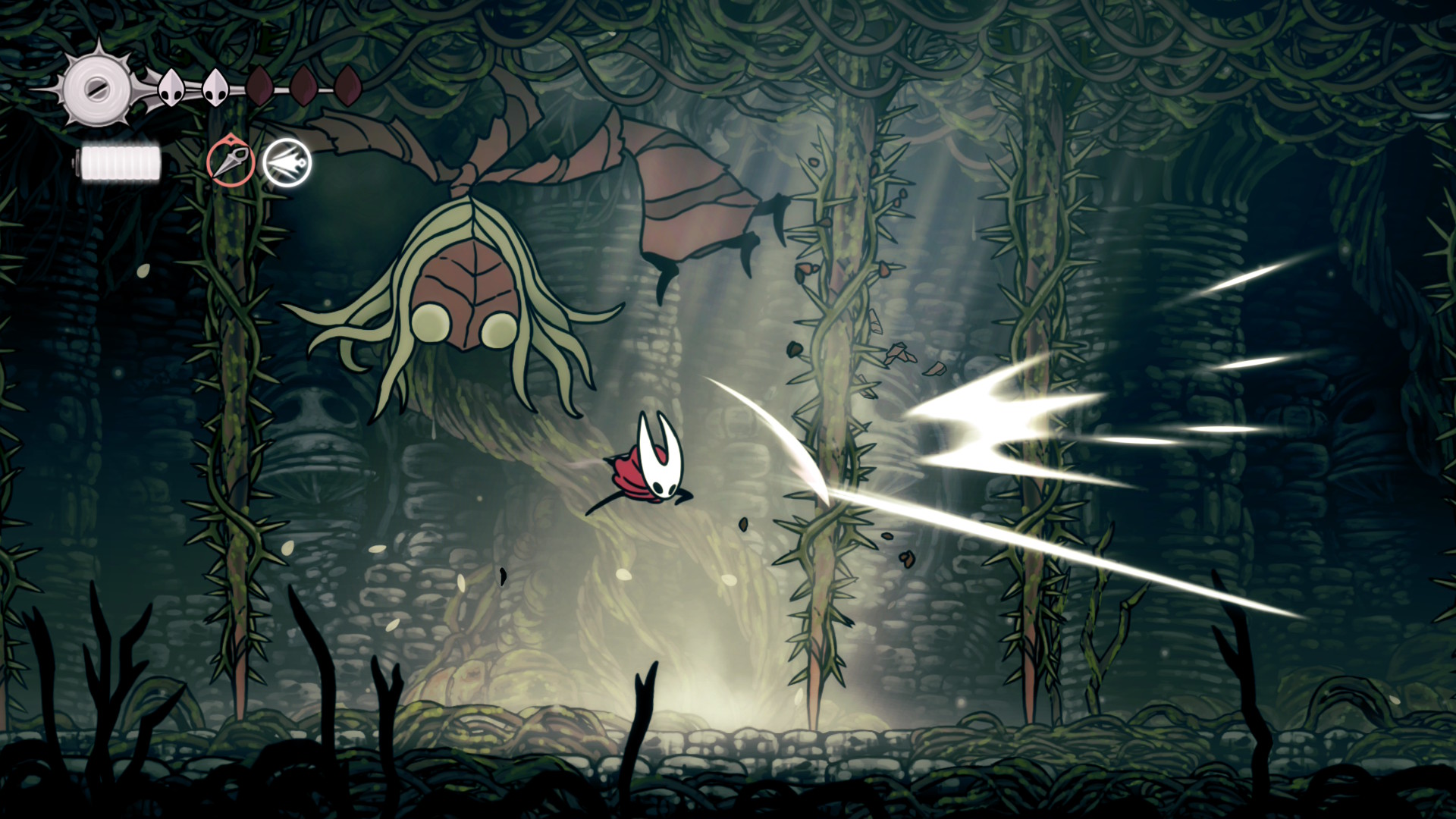
But, even with those familiar foundations, Hollow Knight: Silksong strikes out in new directions – sometimes literally. Most of it simply comes down to Hornet herself. It's the deceptively modest diagonal dive attack that makes Hollow Knight: Silksong stand out the most from its predecessor, potentially delighting and unsettling veterans in equal measure. Whereas in the first game The Knight's downward strike was a pogo-like motion straight down Hornet divebombs ahead diagonally like a missile.
Last time around, as you got used to the rhythm, you could keep combos going almost endlessly, which could flatten some encounters. Here, the forward momentum makes this tougher to pull off, while simultaneously emphasizing Hornet's momentum. It's a nerf of sorts that comes with its own bonuses: Hornet flipping over enemy heads as she scores a hit with it, bouncing back into the air to reposition – in some cases outright evading huge boss swings. It's extremely satisfying to chain, really offering the sense that Hornet is spinning a web of pain around her foes. In scraps, it's a well judged change. Combine that with a twitchy parry, and it's clear that successfully getting my mandibles around Hornet comes from being willing to fearlessly throw myself into the fray, reacting as much on learned instinct as caution.
Weekly digests, tales from the communities you love, and more
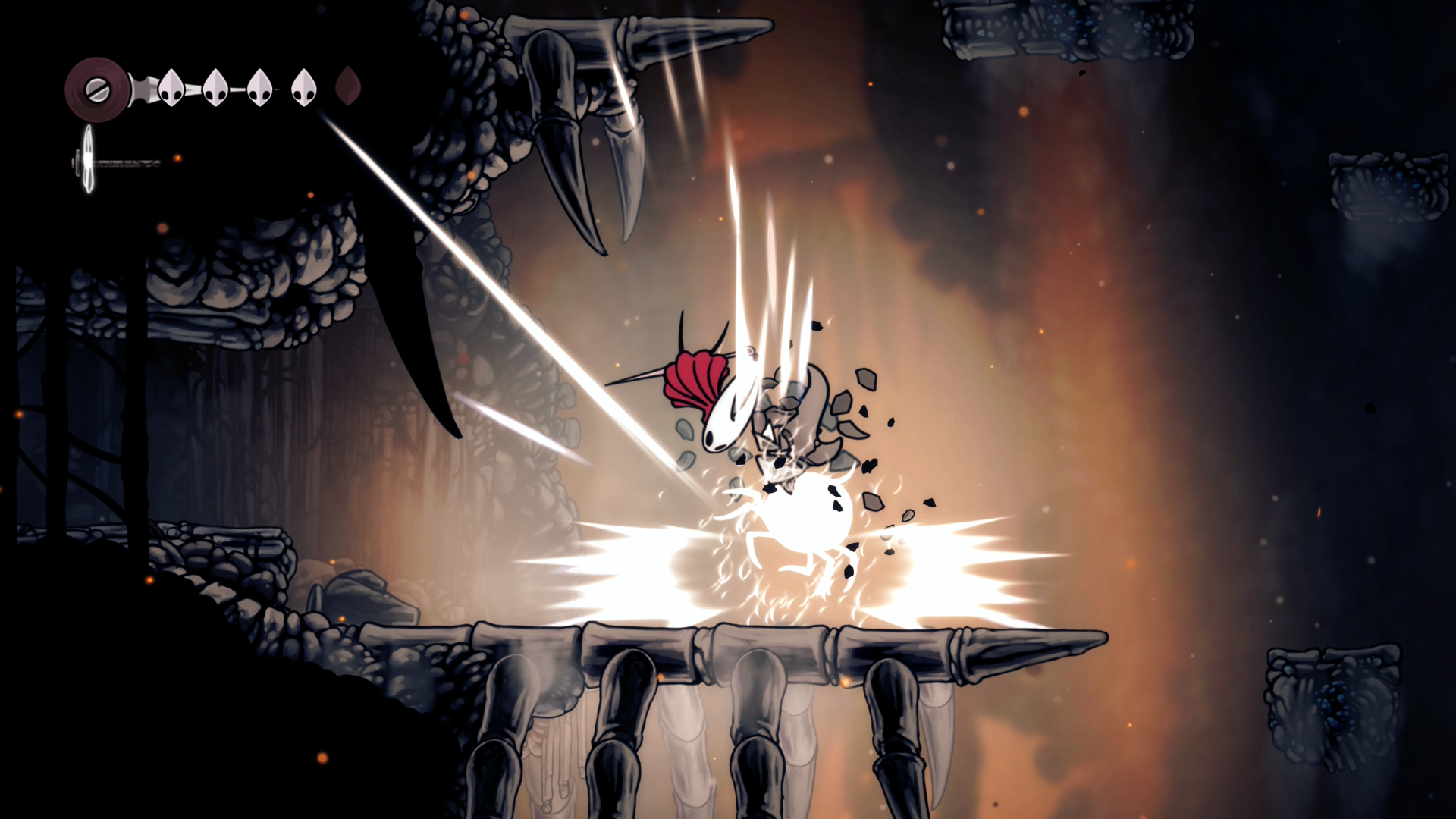
It's the deceptively modest diagonal dive attack that makes Silksong stand out.
I'm less keen on this movement when it comes to platforming. Hornet's higher mobility comes with more demanding jumping challenges. Even from earlier on, you're pushed to perform things like diagonal pogo jumps across spikes between spread out checkpoints. Getting the new angle right can feel unreliable. It's one thing clearing these a single time, but Metroidvania exploration is all about repeating routes and, combined with some design right out of Dark Souls, you'll also be running back to boss arenas after failed attempts, trying to re-collect lost currency from your left behind silk cocoon lest you lose it forever (though, without being tied to levelling up – it's not as vital as it is in FromSoftware's work).
Game difficulty is easy to think about in terms we've gotten used to seeing it – Easy, Normal, Hard, maybe Nightmare. In reality, though, nothing is quite that clear cut. One gamer's Normal may be another's Hard. Hollow Knight: Silksong has no difficulty modes (except for a secret, unlockable permadeath mode that makes me shudder). I wish it did, as it would make it a lot easier to recommend experiencing its wonderful world and mysterious storytelling to those who aren't able to clear some incredibly demanding challenges. Instead, Silksong can feel unwelcoming for those curious, the opportunity to become enamored with besting beasties becoming simply off-putting.
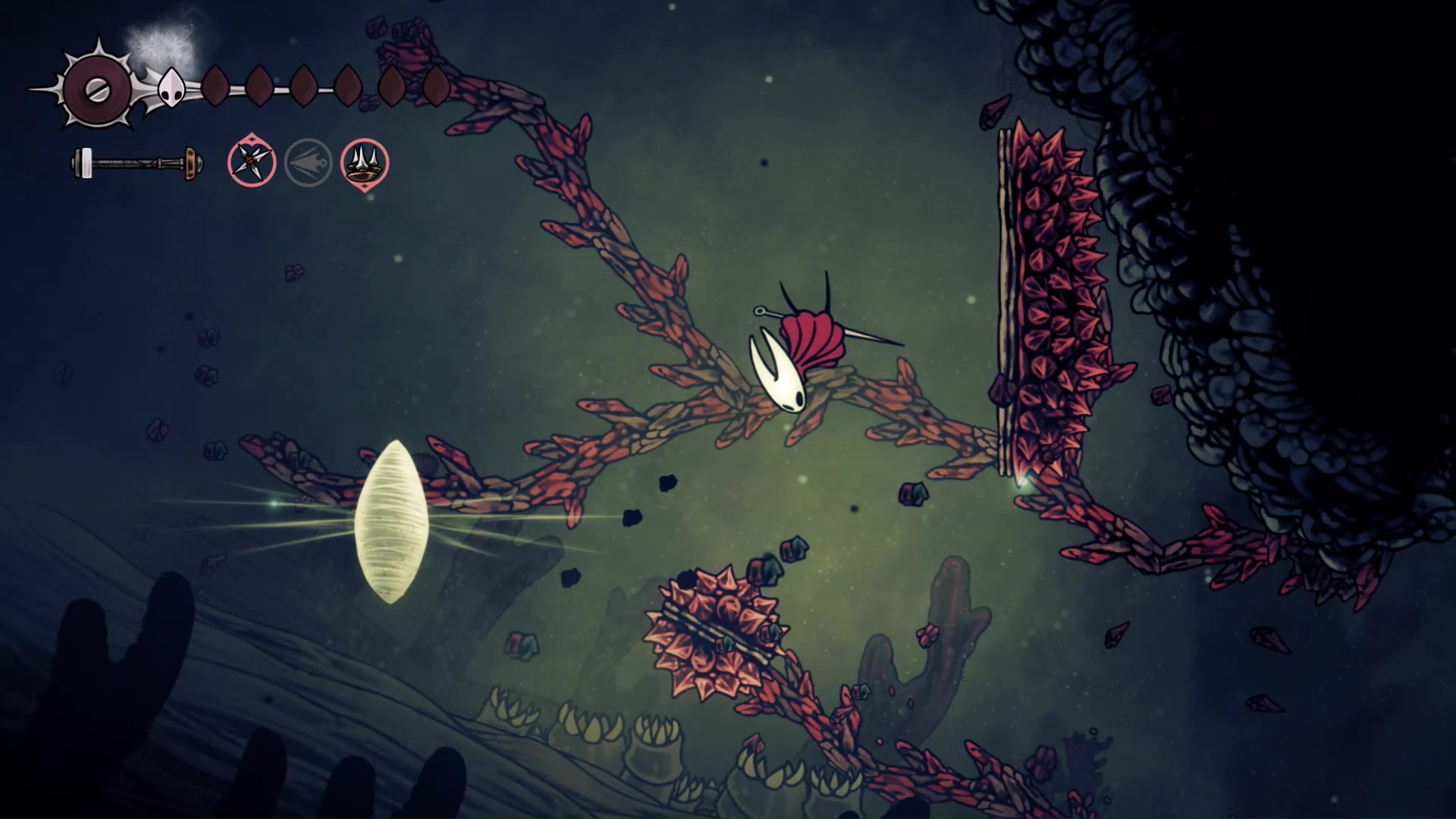
It's not about difficulty itself, but how it's deployed. At many points it can feel like there's a hostility to engaging with Silksong's systems on a broader level beyond whether any one particular battle is hard or not. In fact, Silksong is at its best throwing you into tense and challenging situations, from groups of its wildly varied regular enemies (seriously, how are there so many designs, and why are they all so good?) to tough bosses that range from massive multi-limbed menaces to rival-like duels with opponents Hornet's own size.
Pretty much every boss I've clashed with, and, through many attempts, beaten into insectoid mush, has been smartly designed. They're tricky, but learnable, never having too many moves that it's impossible to remember them, and demanding just enough that spinning around them makes you feel like a genuine acrobat. Meeting and beating each one is a highlight of Silksong.
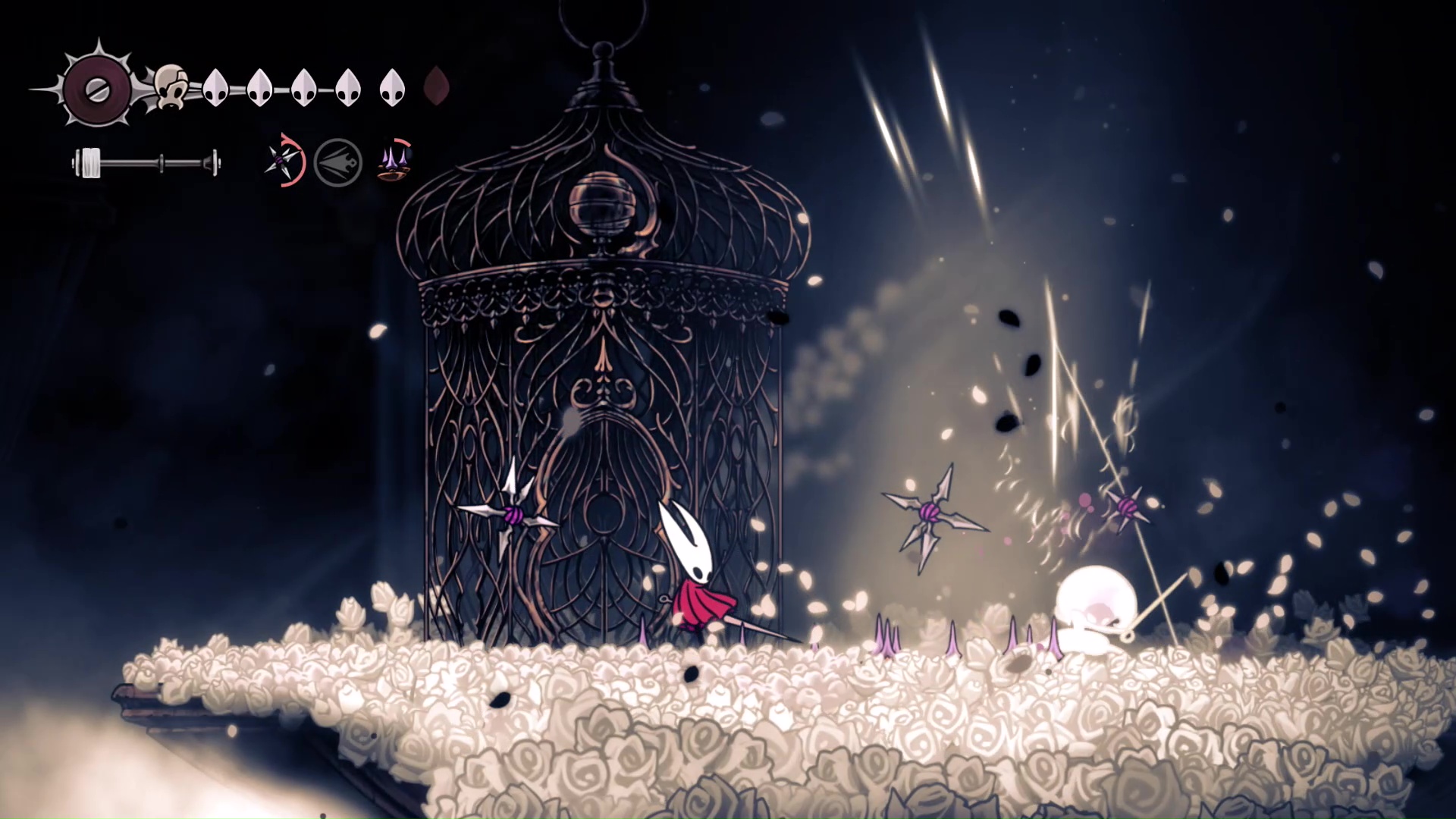
But Silksong can be grueling in other ways that feel needless at best, and takes away from the joy of pushing through a challenge at worst. Lots of boss fights have lengthy 'runbacks' from each checkpoint that grow tiresome, from lengthy elevator sequences to whole nail-biting platforming sequences you have to clear with every attempt. Whether they're platforms to bounce off of, or filled with keep-away enemies that float just out of reach with inflated health (while also getting in your face on narrow platforms), they're just not fun to have to repeat so many times. There's a reason Elden Ring evolved to allow for retries just outside boss doors.
Bosses themselves have high health that can make some fights overstay their welcome, especially as damage upgrades are so sparse and feel insubstantial even when you do nab them. Their damage output, on the other hand, is also super high, with every boss dishing out two damage with every strike. Only starting with five health pips, that means even tracking down four mask pieces for an extra slither of health does nothing to stop you from still taking just three hits in every encounter. So much as touching a boss is enough to see you battered, and you'll likely fall victim to an actual attack in the process, meaning it's easy to get killed very quickly – even if your (interruptable) heal can restore three masks. Late game, even some regular enemies or hazards will shave off two health as well. Sometimes it can feel like Silksong throws challenges your way just for the sake of it, with an over-reliance on closed room enemy wave gauntlets. It can be brutal.
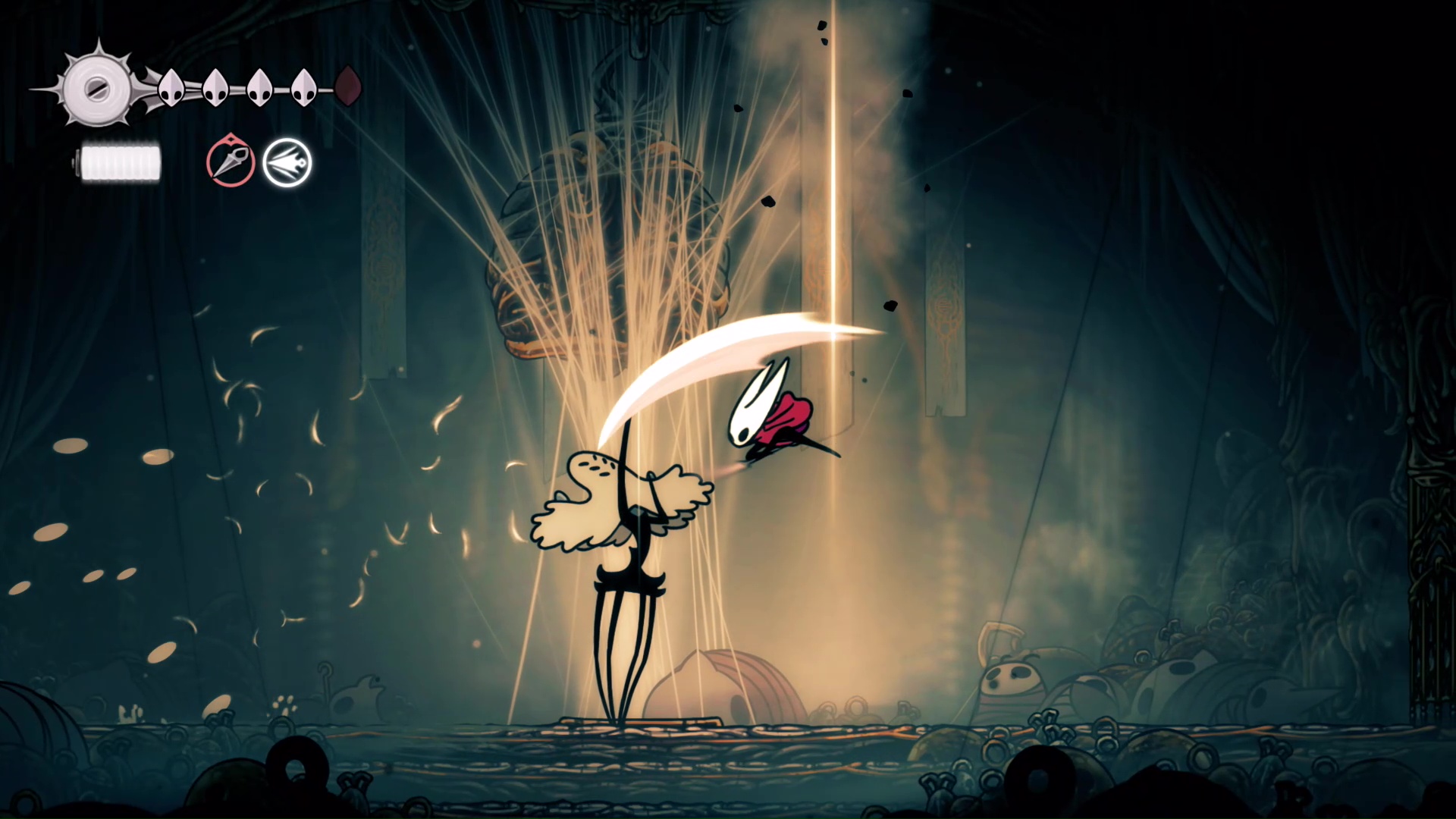
Losing currency when you fail to retrieve your death cocoon isn't the end of the world, but it can contribute to negative momentum when you find yourself in a pinch. Frequently vital services in the game world require increasingly hefty amounts of the rosary currency – fast travel points, checkpoint benches, and even maps. You'll need to secure these most when you're struggling, and it's also when you're struggling that you'll be less able to plant your flag.
Likewise, Hornet's new tools can be used to turn the tides in tricky fights, throwing out traps like floor tacks or hurling boomerangs to clip the wings of annoying crows. You'll quickly learn these can be vital for mastering combat. These are refilled at rest points using shards, a currency not lost on death that you'll nevertheless quickly chew through when retrying hard boss fights, unable to restore your stock. The solution to these isn't too tough – go back to points where enemies drop what you need and grind them out. But in a game where there's not even a levelling system, grinding for resources isn't exactly a thrilling experience. It's a problem that undercut Sekiro too.
Little annoyances like this can add up and feel extremely discouraging, getting in the way of experiencing Silksong where it really shines – crossing blades with tough foes and unravelling the harsh but intriguing world of Pharloom. Instead, you can end up feeling like you want to play it safe – a disservice to Hornet's zippiness.
Bugging out
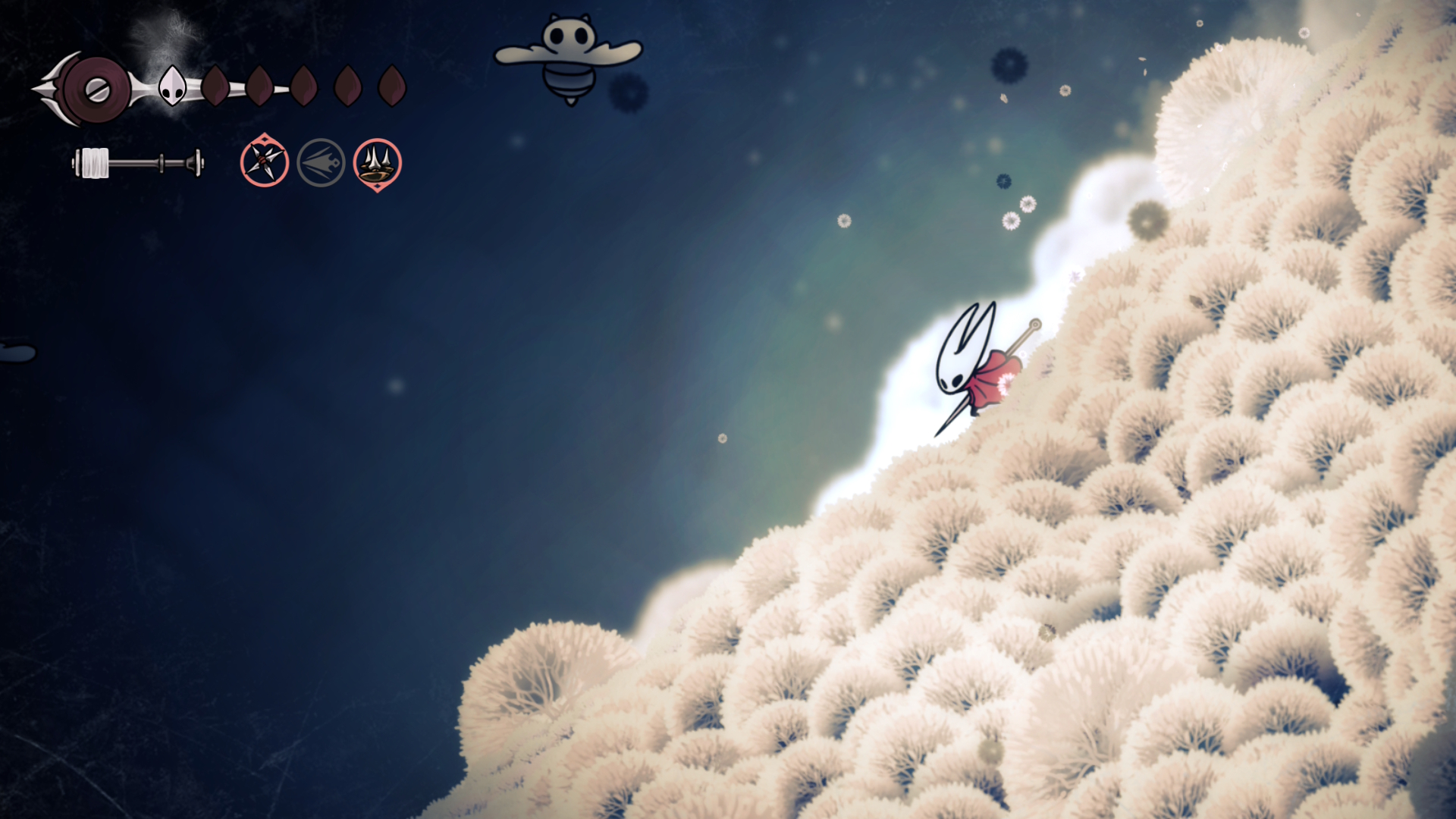
There's an amount of customization to be had with Hornet's moveset through unlockable crests that alter her moves and special abilities – for instance, one that slows down her attacks with wider, heavier slashes. Each has its own slots for tools, from the aforementioned pointy variety to buffs that have similar effects to the first game's charms. Crest slots can be expanded, but require using a rare, shared resource. Some crests also feel much harder to use – one claw-based one, for instance, has a terrible pogo-attack that hurls you forward. It ended up discouraging me from experimenting, sticking with just a couple I upgraded and felt comfortable with.
Even having hit credits, I'm conscious of so many secrets in Pharloom that remain just out of reach.
Even so, the low points feel like roadblocks on a drive that remains fascinating and unique the whole way through. Even having hit credits, I'm conscious of so many secrets in Pharloom that remain just out of reach, and give me plenty of reason to keep coming back as I work towards mopping up everything. While Pharloom's design feels like it's constantly pushing you forward to master each strange but beautiful new area, speaking with others has made it clear to me how radically different each person's path through Hollow Knight: Silksong can be. Beyond simply looking beautiful, I've been blown away by some excellent haptic rumble – the rain feels wonderful pitter-pattering on my sweaty gamer fingers.
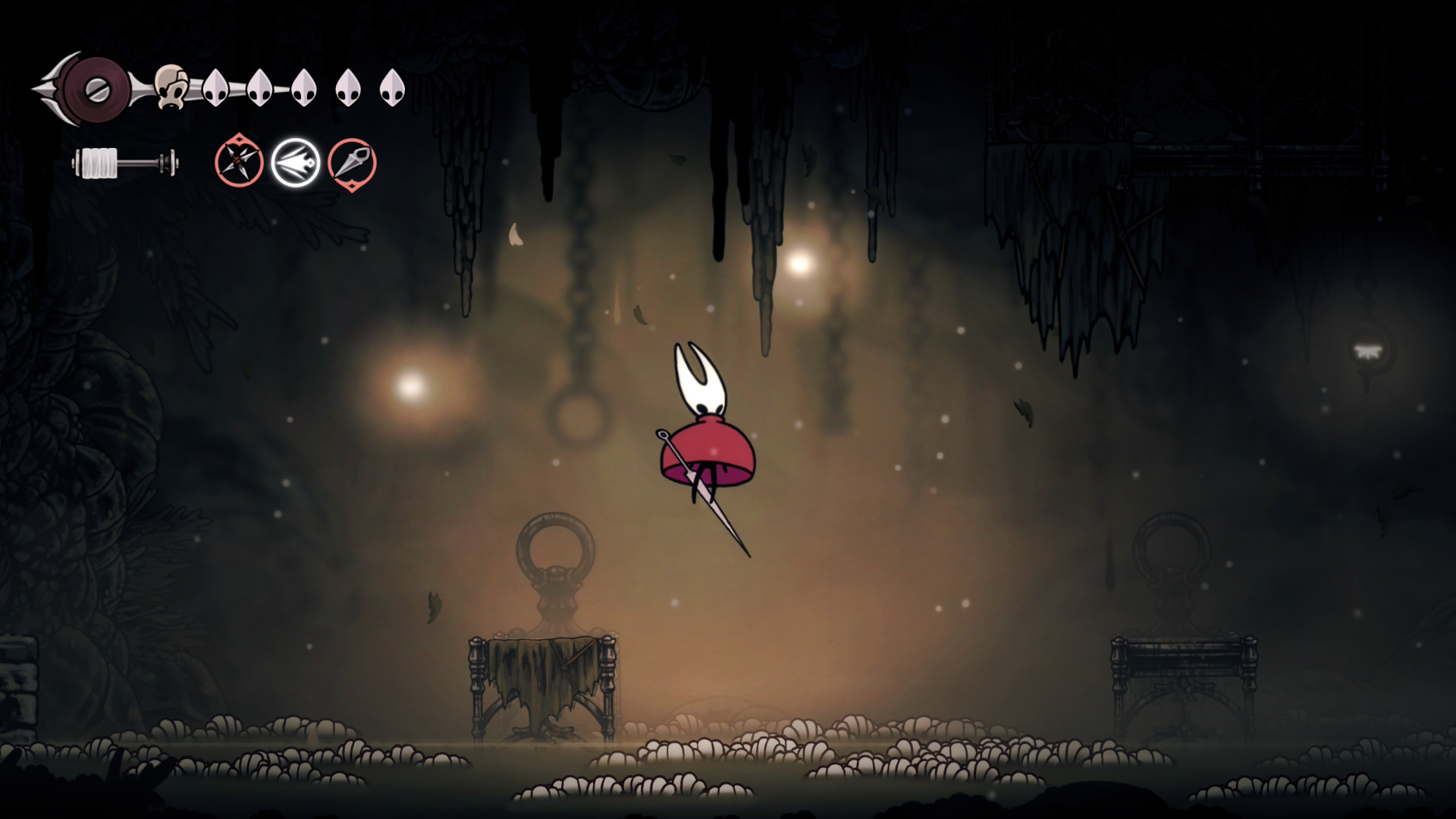
While I do think the solution to uncover some hidden paths does lean a bit too heavily on 'smash that otherwise inconspicuous wall', the sheer variety of areas and how far they spiral out is genuinely awe-inspiring. As well as having their own bosses to face and unique enemy types, many also introduce whole mechanics used only in that zone that feel amazing to stumble across, even if they can sometimes bring a tear to my eye. Maggots that chew through your healing silk until you expunge them? Haven't I suffered enough? (I've not).
Apparently there's some kind of jailbreak sequence you can stumble into accessing from a few different areas. It didn't happen to me. At least… not yet. Quests on the periphery of the critical path constantly give you new threads to pull at and, as you master Hornet's tool set, you finally begin to feel powerful towards the end of the game – it's a thrill to give 'em a good tug until you get scared away by something spindly, toxic, spiky, or, perhaps, all three.
Mostly, I love that my adventure through Pharloom in Hollow Knight: Silksong doesn't feel like I'm playing just more Hollow Knight – it manages to strike off into being something new, able to reach heights that just weren't possible before, even though it has its fair share of annoyances (some of which are being patched and adjusted already). Still, that makes it all the more of a shame that Silksong's balancing seems to lean in favor of those who already mastered the original game's toughest challenges. So much about Hollow Knight: Silksong feels so fresh, that I wish it were better able to shake off its cocoon and soar on its own terms, rather than feeling defined by the challenge of what came before.
Hollow Knight: Silksong was reviewed on Nintendo Switch 2.
Looking for something else? Check out our best Metroidvania games list!

Games Editor Oscar Taylor-Kent brings his years of Official PlayStation Magazine and PLAY knowledge to the fore. A noted PS Vita apologist, he's also written for Edge, PC Gamer, SFX, Official Xbox Magazine, Kotaku, Waypoint, and more. When not dishing out deadly combos in Ninja Gaiden 4, he's a fan of platformers, RPGs, mysteries, and narrative games. A lover of retro games as well, he's always up for a quick evening speed through Sonic 3 & Knuckles or yet another Jakathon through Naughty Dog's PS2 masterpieces.
You must confirm your public display name before commenting
Please logout and then login again, you will then be prompted to enter your display name.
